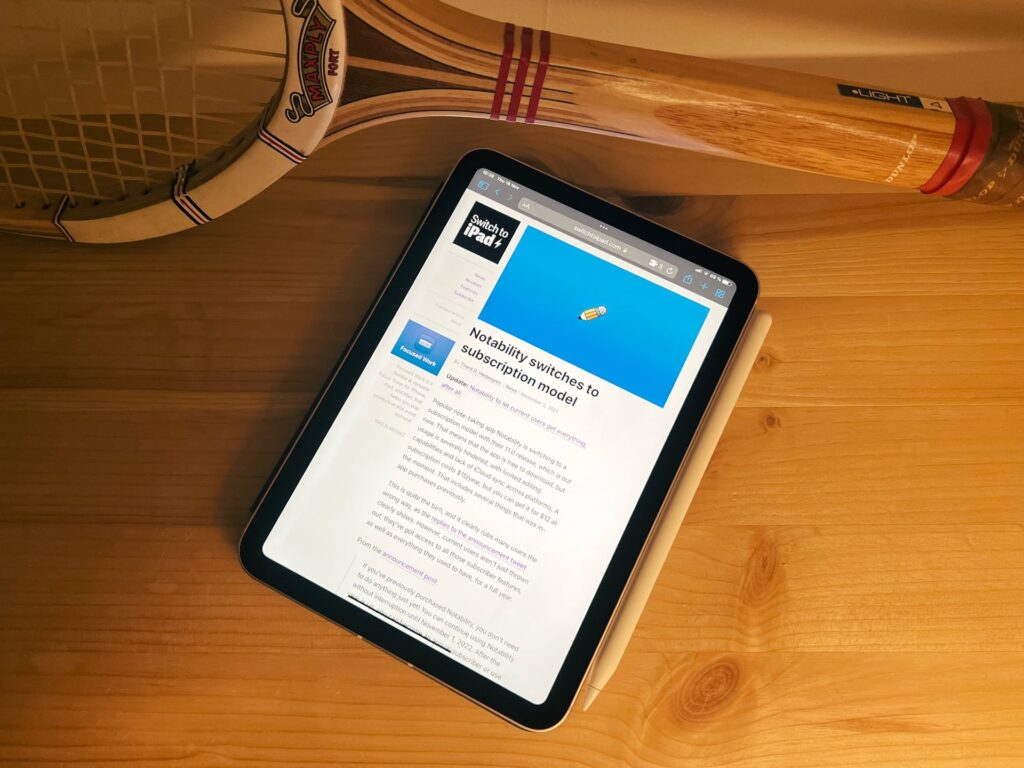🆓 This member post is free for all, thanks to our paying subscribers. Enjoy!
Hi!
How are you doing? Are you sitting there, muttering over yet another app that goes from a premium business model, to a freemium one? Quite a few clearly did the other week, when Notability changed their business model, essentially forcing all its serious users to sign up for a subscription. They reversed this decision, grandfathering their current users into a reasonable free tier unavailable for new users, but the harm was, for some, clearly done.
So, let’s talk a bit about subscriptions as a business model, shall we?
There are several potential business models for apps today. Some of the more obvious ones are:
- Charge a one-time fee for the app.
- Offer the app for free and use ads within the app to earn money.
- The app’s free, but additional content is available as one-time in-app purchases.
- A variation of (3) above: Use timers, gems, and other kinds of in-app currency to limit usage, then sell this in-app currency to the hardcore users via in-app purchases.
- Offer the app for free, but either limit it, or make it unavailable after a free trial, unless the user signs up for a subscription.
Notability, mentioned previously, went from model 1, to model 5. This annoys people that paid a premium price for the app, possibly several times if they want the app on different platforms.
I get that. It’s annoying when you thought you bought something, with implied ongoing support, and then it gets replaced by a subscription. What you paid for doesn’t necessarily disappear, it just won’t get any more updates. As a user and customer that sucks, especially if you ponied up somewhat recently.
Now, I also get why a developer like Notability, with a long track-record of maintaining and developing its app, want to switch to a subscription model. It all boils down to knowing what to expect in terms of earning, and getting paid for usage over time.
Think about it: If you buy an app for $5, and use it for three years, then the developer got $5 from you. During that time, you get new features, bug fixes, and possibly support. Is $5 a reasonable price to pay for an app you use, over a three-year period?
Of course, it isn’t. It’s peanuts. The app developer would have to sell a lot of apps, and find a lot of new customers, every month to make things work.
Now, what if you paid $1/month instead? That means that the developer gets $1/month for as long as you feel it’s reasonable. Those three years goes from $5, to $36. Still not a lot of money, perhaps, but it’s 720% more than that one-time purchase.
Which model do you think has the better chance of being both sustainable from a business perspective, and offer a quality app to the consumers?
It’s no surprise that app developers want you to pay more, and pay frequently, using subscriptions. I currently subscribe to the following apps (I might’ve missed something), not counting services, within the Apple ecosystem, in no particular order:
- Flexibits Premium (for Fantastical)
- Pocket Premium
- Canva Pro
- Ulysses
- CARROT Premium
- Todoist Pro
All my plans are yearly whenever possible. It’s a lot of money, but those are some pretty great apps. I don’t mind supporting them because I know I’m helping to keep them alive. Incidentally, all these apps are ones I use daily. The only one that might get thrown out, is Pocket, as discussed in the read it later issue.
Subscription as a business model sometimes make more sense for the app developer, than it does for its users. I don’t think all apps should go this route, but it does make a lot of sense for apps that require constant updates and development. It makes less sense for something that’s static after launch, not counting potential bug fixes.
Personally, I prefer to pay once for an app, and then pay again when the app gets a big upgrade. The app goes from 1.0 to 2.0, so to speak, and then I can decide if I want to pay again when it’s time for 3.0. Unfortunately, the App Store is poorly tailored to this model. Subscriptions are the solution, but it’s a solution tailored for businesses, including Apple in this case, and less so for the consumer. Subscription fatigue is definitely a thing, I cancel and sign up for things all the time, and it’s mostly annoying.
But I do get it, why app developers go down that route, and I wouldn’t yell at them for doing so. It’s hard enough as it is, charging a premium on the App Store, so the next time someone goes the Notability route, give them the benefit of a doubt, okay?
😥 This letter was a day late. It’s been a tough week, and I just couldn’t get it out yesterday. I apologize for this. Thanks for understanding!
In the wild…

